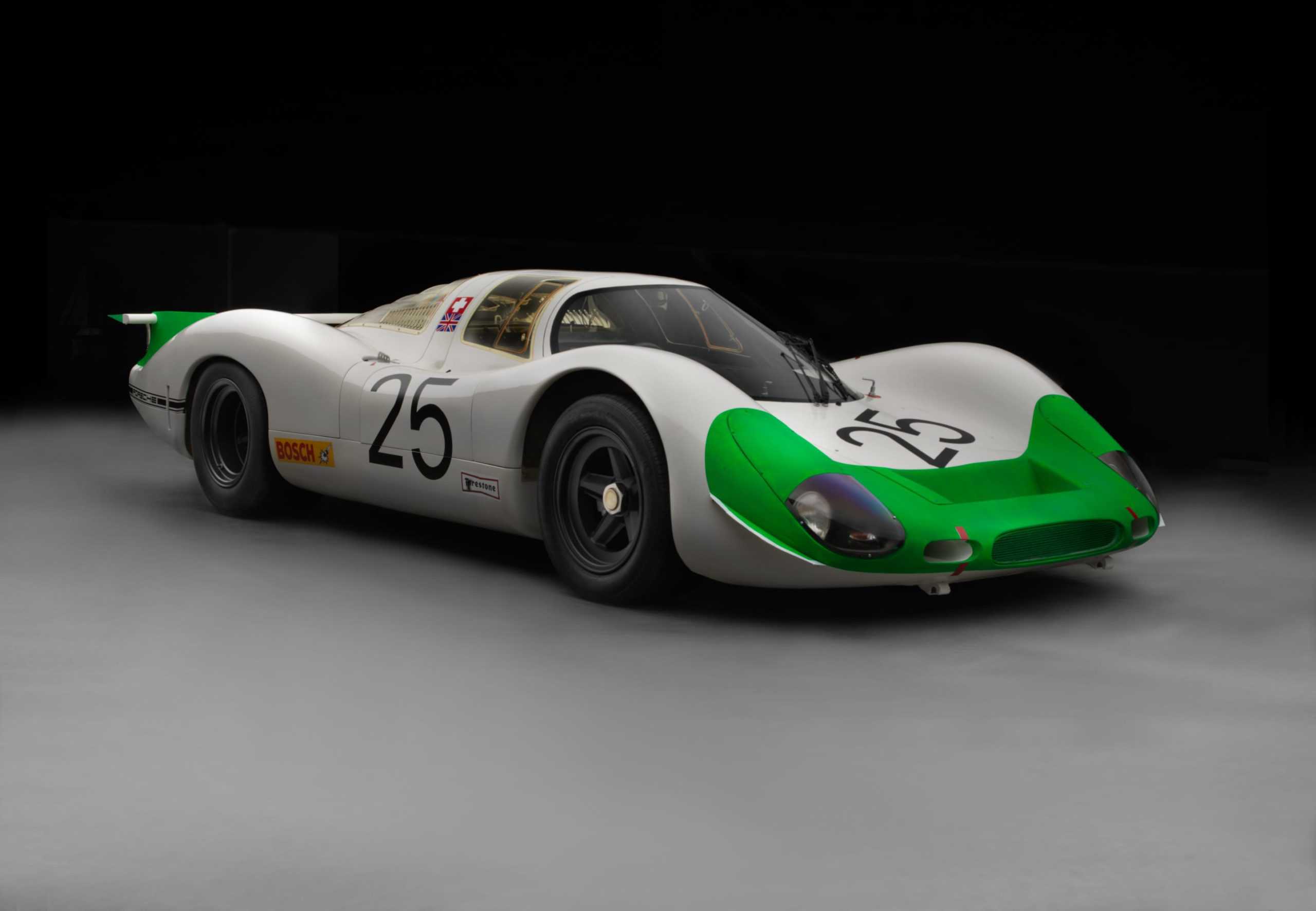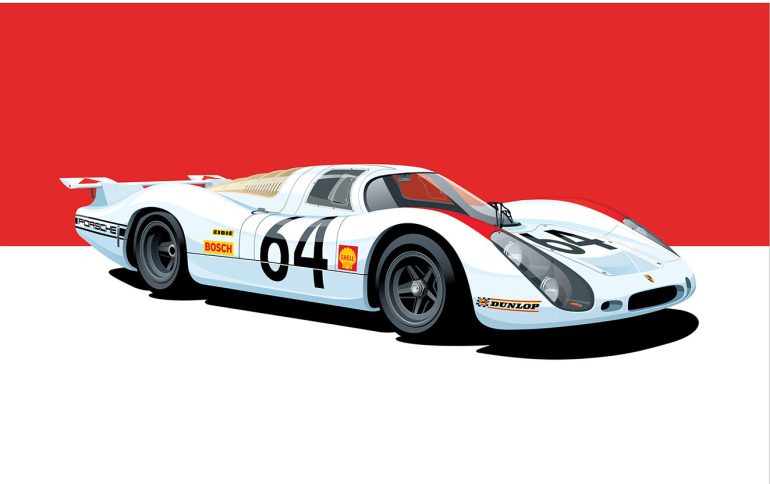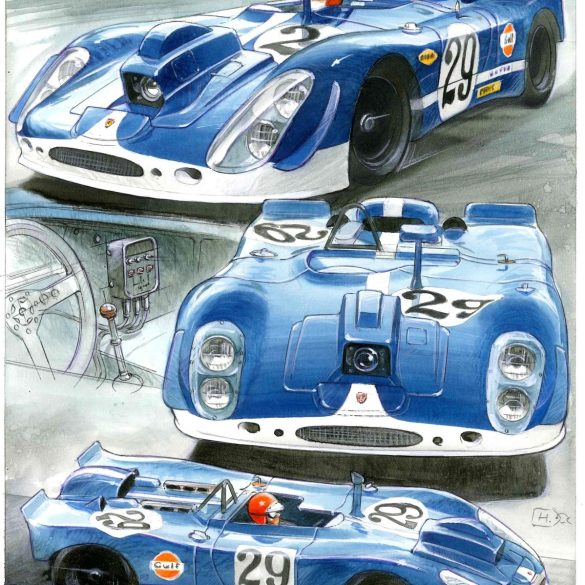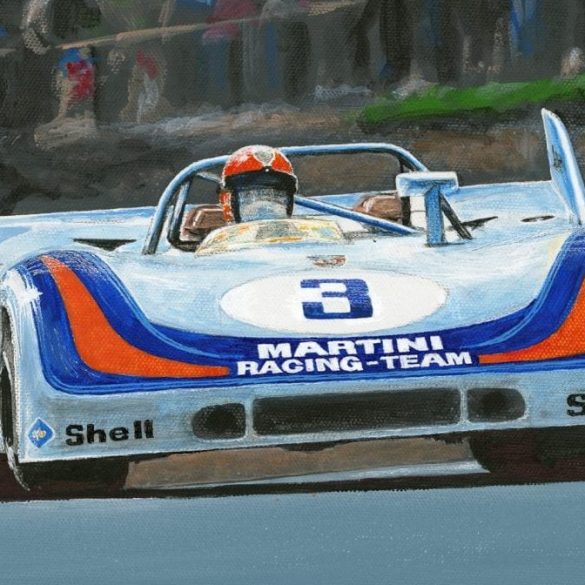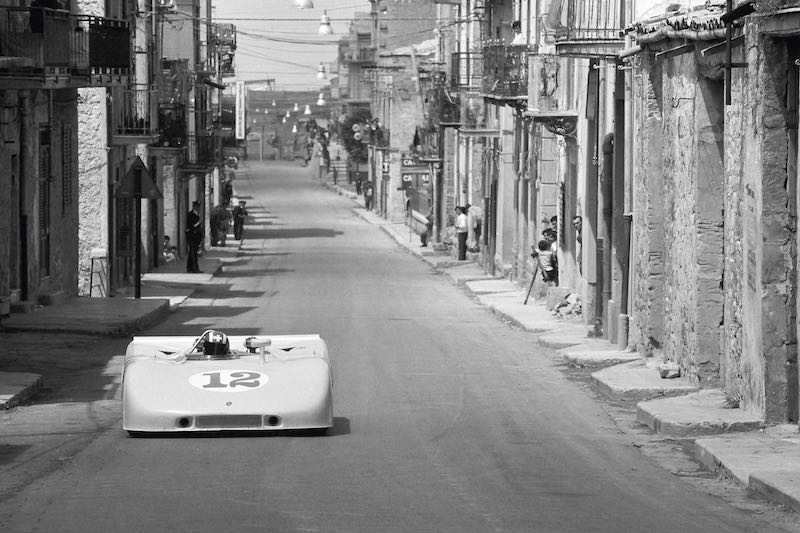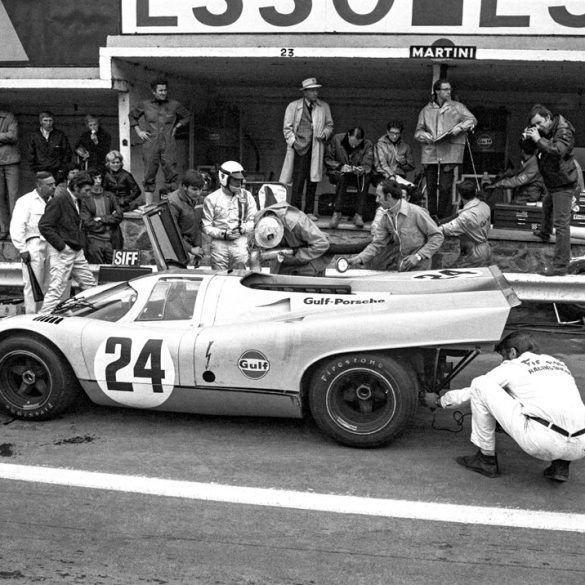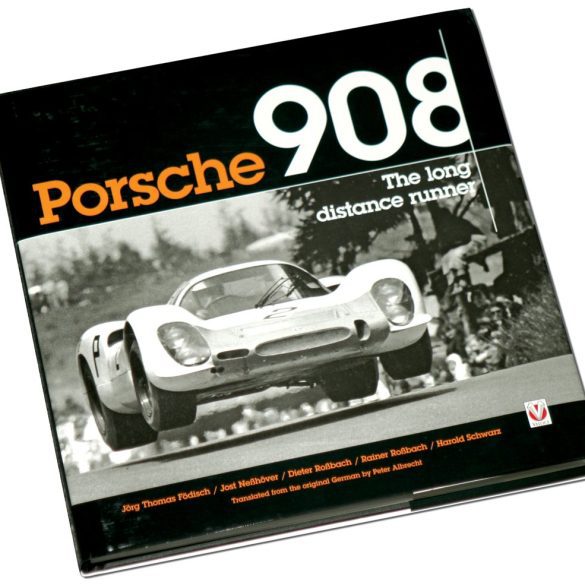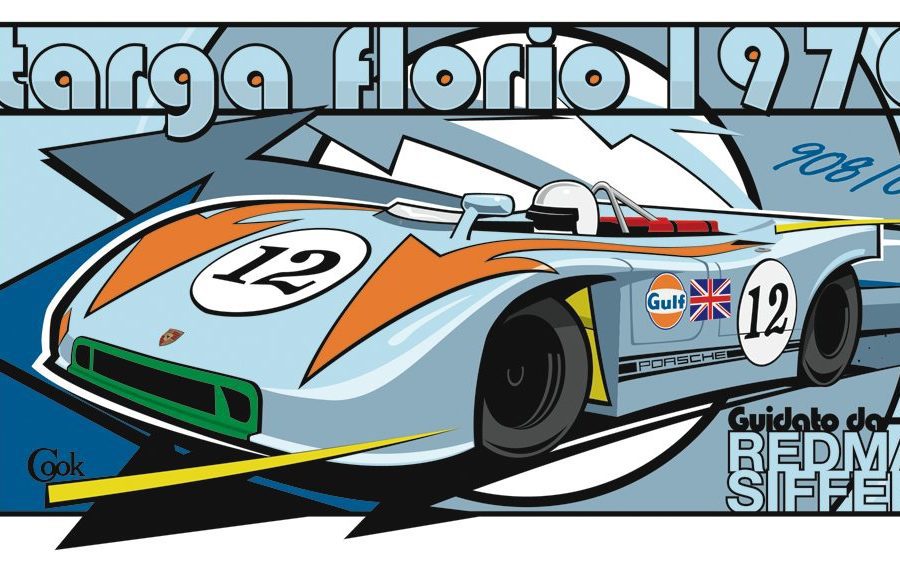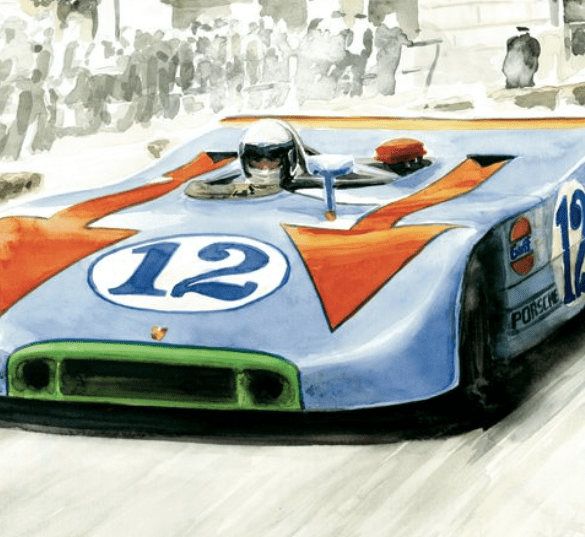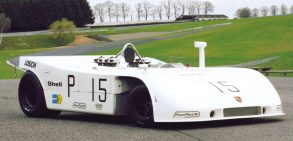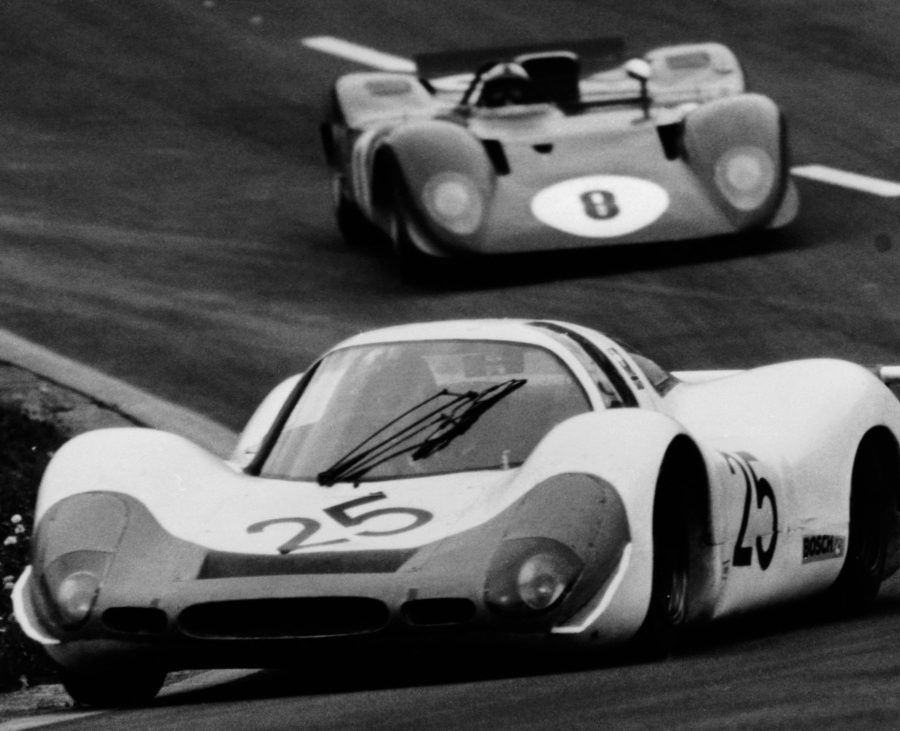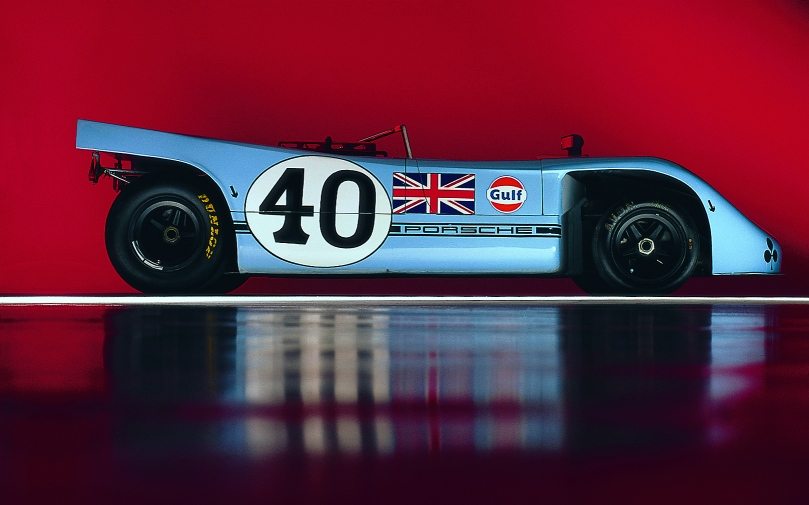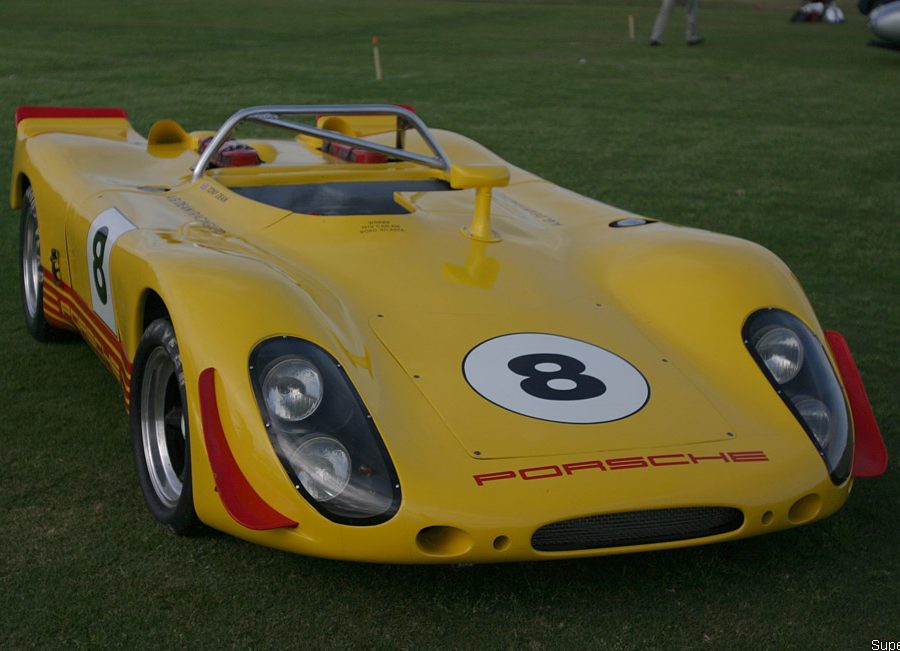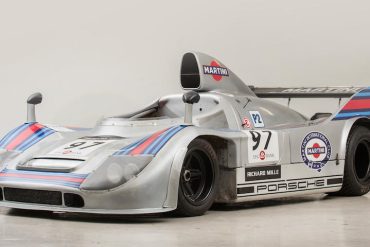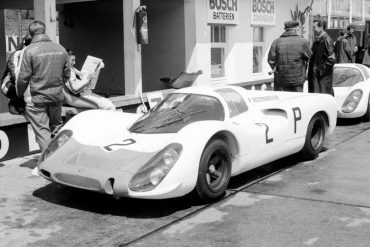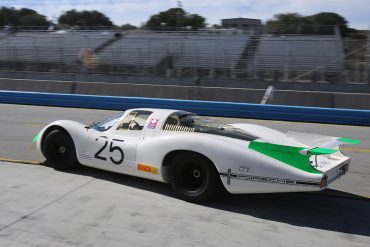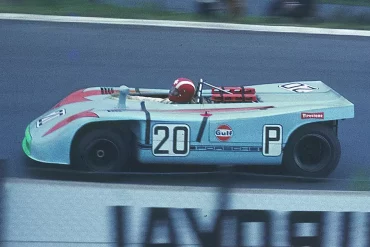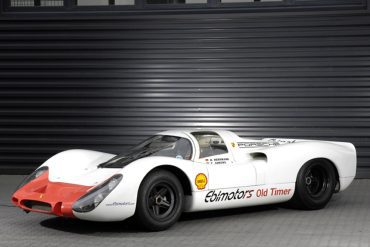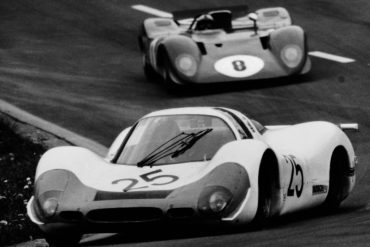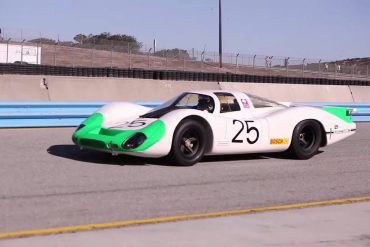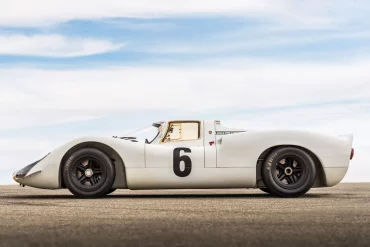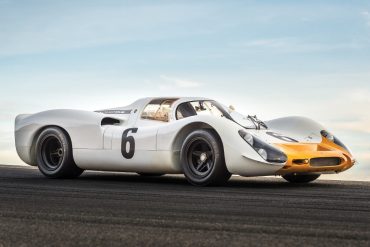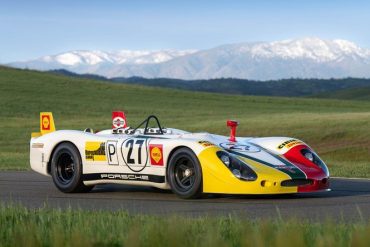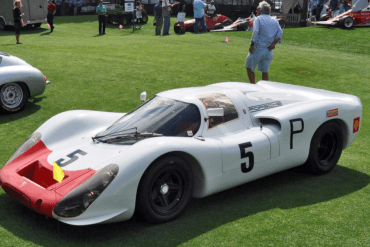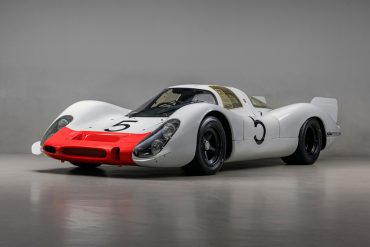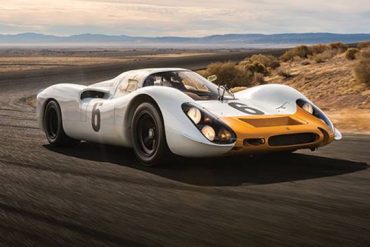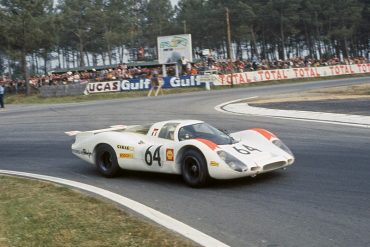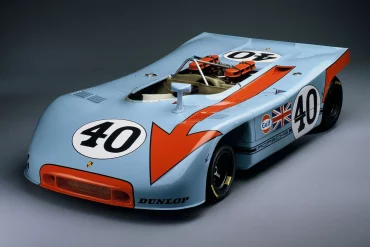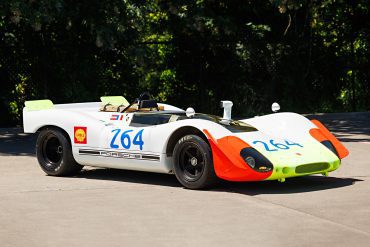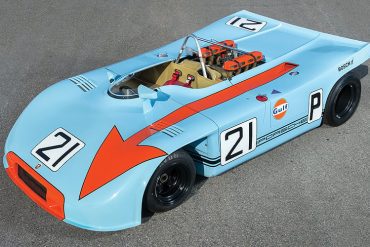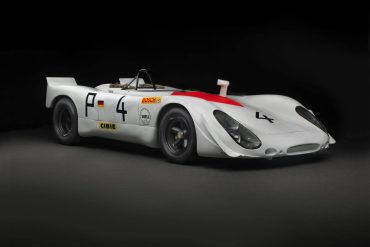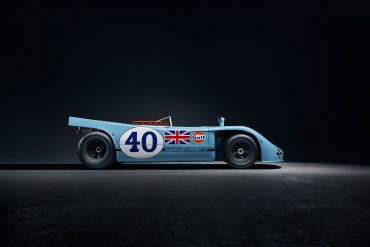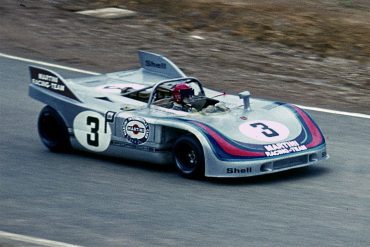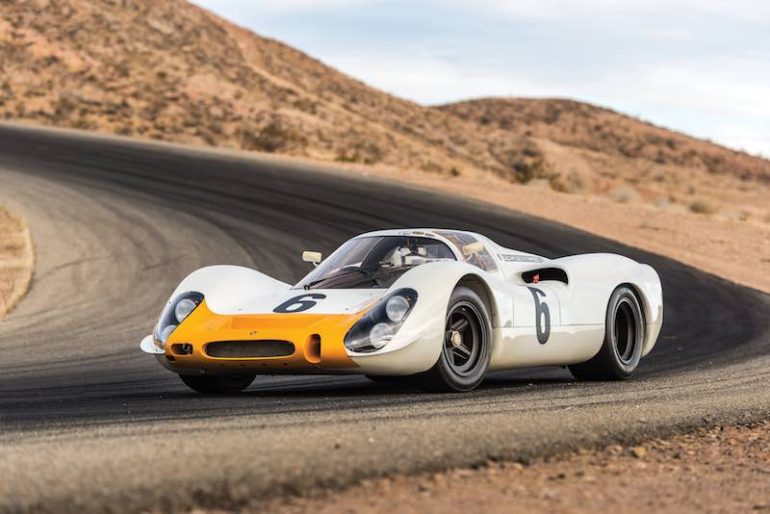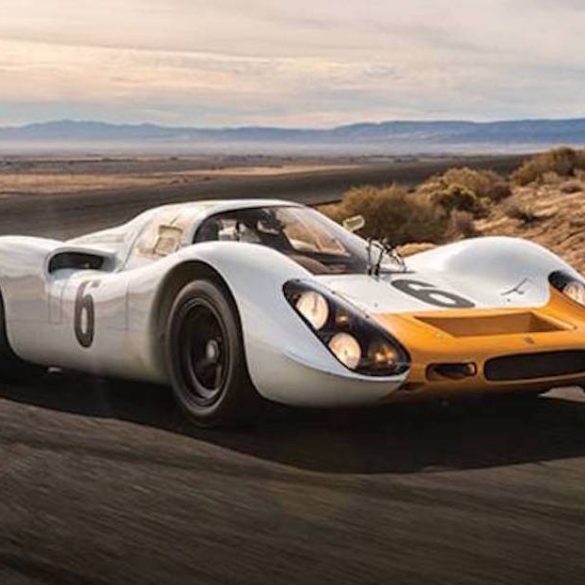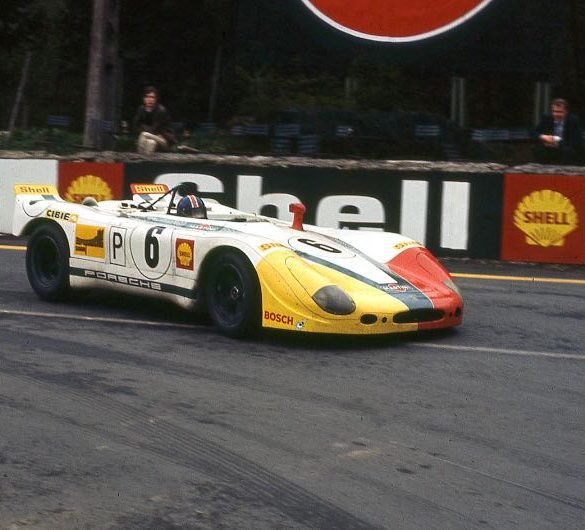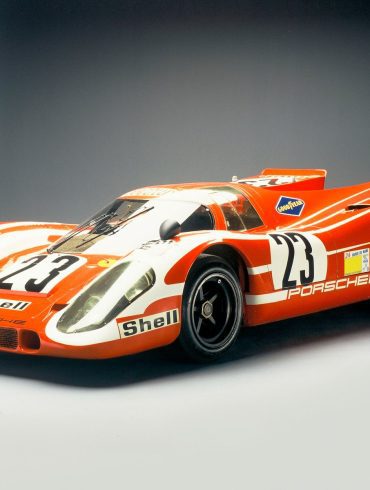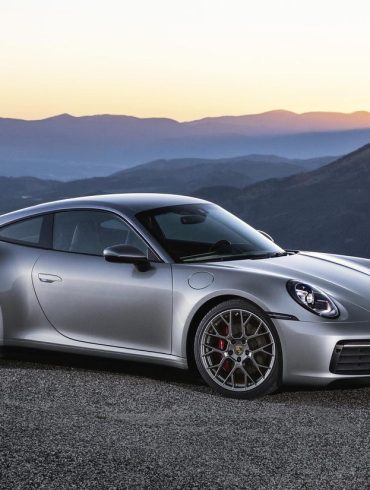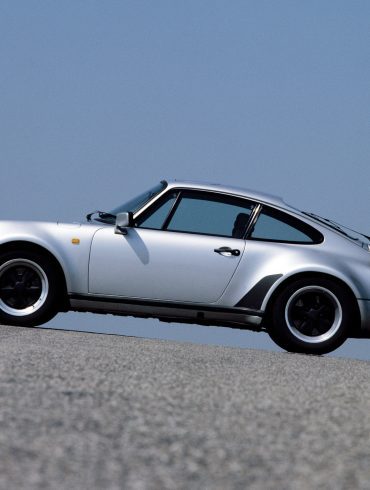Porsche 908
The Ultimate Guide
Some of the earlier Porsche 907s equipped with the smaller 2.2 litre engine were modified with the new 3 litre 8-cylinder engine. This resulted in 908/01, from which two different bodies were created. First was the Porsche 908K or 908/01 Coupé, which was in fact a 907 with the engine required for Group 6 and asymmetric air inlets on the front. The second car was 908 LH or 908/01 Long Tail that differed from the 908K (908/01) as it had a longer body with improved aerodynamics for fast tracks. A beautiful 908LH ‘Langheck’ (‘long-tailed’) version also was developed for exceptionally high speeds at Le Mans, Spa, Monza and Daytona. For 1969 Porsche developed an ultra-lightweight open-cockpit Spyder version, the Porsche 908/02 again with two body styles.
Overview / Model Guides / Featured Stories / The Market / Image Gallery
The Porsche 908: The Versatile Prototype That Shaped Porsche’s Racing Dominance
The Porsche 908 is one of the most versatile and significant race cars in Porsche’s motorsport history. Introduced in 1968, the 908 was designed to meet the new FIA Group 6 regulations for sports prototypes, featuring a lightweight design, powerful engine, and the adaptability to compete in a variety of race formats. Over its racing lifespan, the 908 evolved through numerous iterations, including coupés, spyders, and long-tail variants, showcasing Porsche’s engineering ingenuity and commitment to excellence. The 908’s remarkable success on the track laid the groundwork for future icons like the 917 and solidified Porsche’s reputation as a dominant force in endurance racing.
Origins and Development
The Porsche 908 was developed to take full advantage of the FIA’s new regulations, which allowed for 3.0-liter engines in the sports prototype class. This was a direct response to the dominance of larger-displacement cars like the Ford GT40 and Ferrari prototypes. The 908 was powered by a 3.0-liter flat-eight engine producing around 350 horsepower. The car’s lightweight construction, using a spaceframe chassis and fiberglass bodywork, ensured it remained agile and competitive.
The 908 was designed to be adaptable, with Porsche producing multiple configurations to suit different racing conditions. These included the 908 LH (Langheck or long-tail) for high-speed tracks like Le Mans, the 908 K (Kurzheck or short-tail) for tighter circuits, and the 908/02 Spyder, an open-top version optimized for events like the Targa Florio and hill climbs.
Racing Success
The Porsche 908 made an immediate impact in its debut season in 1968. One of its first major successes came at the 1968 1000 km of Nürburgring, where it claimed a dominant victory, showcasing its balance of power, handling, and reliability. That same year, the 908 secured a second-place finish at the 24 Hours of Le Mans, narrowly missing the top step but proving its potential in endurance racing.
The 1969 racing season saw the 908 achieve even greater success. At the 12 Hours of Sebring, the 908 earned a hard-fought victory, driven by Jo Siffert and Brian Redman. The 908 continued to shine at the 1000 km of Spa and the 1000 km of Nürburgring, where it outperformed its competitors with its superior handling and consistency. One of the most dramatic moments in 908 history came at the 1969 24 Hours of Le Mans, where the 908, driven by Hans Herrmann and Gerard Larrousse, finished just seconds behind the winning Ford GT40 in one of the closest finishes in Le Mans history.
In 1970, the 908/02 Spyder excelled at the Targa Florio, with Brian Redman and Jo Siffert taking the overall victory. The 908’s versatility and adaptability made it a favorite for privateer teams, who continued to race various iterations of the car well into the 1970s. The 908/03 Spyder, introduced in 1970, was specifically designed for twisting circuits like the Targa Florio and the Nürburgring Nordschleife. Weighing just 545 kg (1,202 lbs), the 908/03 combined a compact, lightweight design with the potent 3.0-liter flat-eight engine, making it exceptionally agile.
Design and Innovations
The Porsche 908 was a showcase of engineering innovation. The 3.0-liter flat-eight engine was a masterpiece of Porsche’s air-cooled technology, delivering high-revving power and reliability. The car’s aerodynamic bodywork was designed for different racing conditions, with the long-tail versions maximizing top speed on long straights and the short-tail and Spyder variants optimized for maneuverability and downforce on tight circuits.
The 908 also introduced advanced suspension systems and braking technology that allowed drivers to push the car to its limits with confidence. The lightweight construction, using a combination of a spaceframe chassis and fiberglass panels, set a precedent for future Porsche prototypes.
Legacy of the Porsche 908
The Porsche 908’s success and versatility had a lasting impact on Porsche’s racing program. It served as a bridge between the earlier 906 and 910 models and the legendary Porsche 917, which would go on to dominate endurance racing in the early 1970s. The 908 proved that Porsche could compete with and defeat much larger and more powerful competitors, thanks to superior engineering, reliability, and innovative design.
The 908’s influence extended beyond factory racing efforts, as privateer teams continued to field various iterations of the car for many years. Its adaptability, lightweight design, and reliable powertrain made it a favorite among independent racers.
Today, the Porsche 908 is celebrated as one of the key milestones in Porsche’s motorsport history. Its victories in events like the Targa Florio, Nürburgring 1000 km, and Sebring 12 Hours highlight its capability and enduring legacy. The 908 remains a symbol of Porsche’s relentless pursuit of engineering excellence, proving that innovation, efficiency, and determination are just as important as raw power in the quest for racing glory.
Porsche 908 Basics
Manufacturer: Porsche
Production Years: 1968 - 1971
Production: ~ 31 units
Assembly: Germany
Chassis: Spaceframe chassis
Layout: Rear mid-engine, rear-wheel-drive
Bodystyle: Coupe, Spyder Engine: 3.0 L Flat 8 (908/01, 02, 03), 2.1 L turbo Flat 6 (908/03)
Transmission: 5-speed manual
Weight: 6500 kg (1,430 lb)
Designer(s): Wilhelm Hild
Predecessor: Porsche 907
Successor: Porsche 936
More Info
The 908 was one of the most versatile racing cars Porsche ever built. It was competitive in a wide range of disciplines, from endurance racing to hill climbs
Stuttcars.com
The 908 was a lightweight and agile car, with a powerful flat-8 engine
Stuttcars.com


